
La Grande Illusion is a 1937 French war drama film directed by Jean Renoir, who co-wrote the screenplay with Charles Spaak. The story concerns class relationships among a small group of French officers who are German prisoners of war during World War I and are plotting an escape.
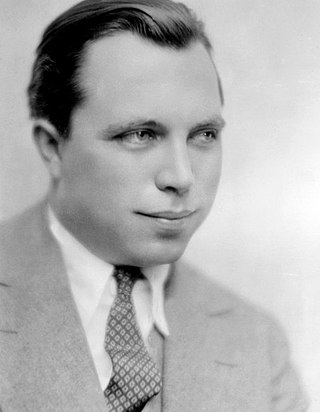
King Wallis Vidor was an American film director, film producer, and screenwriter whose 67-year film-making career successfully spanned the silent and sound eras. His works are distinguished by a vivid, humane, and sympathetic depiction of contemporary social issues. Considered an auteur director, Vidor approached multiple genres and allowed the subject matter to determine the style, often pressing the limits of film-making conventions.

Jean Renoir was a French film director, screenwriter, actor, producer and author. As a film director and actor, he made more than forty films from the silent era to the end of the 1960s. His films La Grande Illusion (1937) and The Rules of the Game (1939) are often cited by critics as among the greatest films ever made. He was ranked by the BFI's Sight & Sound poll of critics in 2002 as the fourth greatest director of all time. Among numerous honours accrued during his lifetime, he received a Lifetime Achievement Academy Award in 1975 for his contribution to the motion picture industry. Renoir was the son of the painter Pierre-Auguste Renoir and the uncle of the cinematographer Claude Renoir. He was one of the first filmmakers to be known as an auteur.
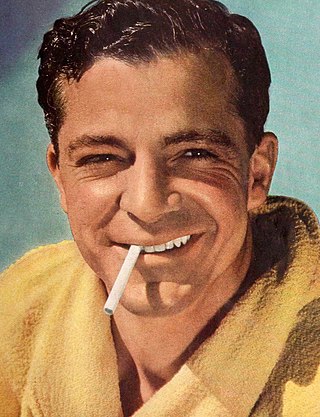
Carver Dana Andrews was an American film actor who became a major star in what is now known as film noir. A leading man during the 1940s, he continued acting in less prestigious roles and character parts into the 1980s. He is best known for his portrayal of obsessed police detective Mark McPherson in the noir Laura (1944) and his critically acclaimed performance as World War II veteran Fred Derry in The Best Years of Our Lives (1946).
The year 1948 in film involved some significant events.
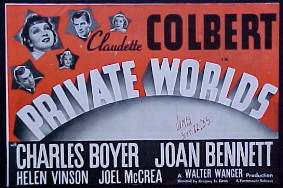
Private Worlds is a 1935 American drama film which tells the story of the staff and patients at a mental hospital and the chief of the hospital, who has problems dealing with a female psychiatrist. The film stars Claudette Colbert, Charles Boyer, Joel McCrea, Joan Bennett, and Helen Vinson.

Jeanne Elizabeth Crain was an American actress. She was nominated for an Academy Award for Best Actress for her title role in Pinky (1949). She also starred in the films In the Meantime, Darling (1944), State Fair (1945), Leave Her to Heaven (1945), Centennial Summer (1946), Margie (1946), Apartment for Peggy (1948), A Letter to Three Wives (1949), Cheaper by the Dozen (1950), People Will Talk (1951), Man Without a Star (1955), Gentlemen Marry Brunettes (1955), The Fastest Gun Alive (1956), and The Joker Is Wild (1957).

The Okefenokee Swamp is a shallow, 438,000-acre (177,000 ha), peat-filled wetland straddling the Georgia–Florida line in the United States. A majority of the swamp is protected by the Okefenokee National Wildlife Refuge and the Okefenokee Wilderness. The Okefenokee Swamp is considered to be one of the Seven Natural Wonders of Georgia and is the largest "blackwater" swamp in North America.

Walter Andrew Brennan was an American actor and singer. He won the Academy Award for Best Supporting Actor for his performances in Come and Get It (1936), Kentucky (1938) and The Westerner (1940), making him one of only three male actors to win three Academy Awards, and the only male or female actor to win three awards in the supporting actor category. Brennan was also nominated for his performance in Sergeant York (1941). Other noteworthy performances were in To Have and Have Not (1944), My Darling Clementine (1946), Red River (1948) and Rio Bravo (1959). On television, he starred in the sitcom The Real McCoys (1957-1963).

The Roots of Heaven is a 1958 American adventure film made for 20th Century Fox, directed by John Huston and produced by Darryl F. Zanuck. The screenplay by Romain Gary and Patrick Leigh Fermor is based on Romain Gary's 1956 Prix Goncourt-winning novel of the same name. The film stars Errol Flynn, Juliette Gréco, Trevor Howard, Eddie Albert, Orson Welles, Paul Lukas, Herbert Lom and Grégoire Aslan. Huston later said that Roots of Heaven "could have been a very fine film. And largely owing to me was not a good film at all."

Guinn Terrell Williams Jr. was an American actor who appeared in memorable westerns such as Dodge City (1939), Santa Fe Trail (1940), and The Comancheros (1961). He was nicknamed "Big Boy" as he was 6' 2" and had a muscular build from years of working on ranches and playing semi-pro and professional baseball, and at the height of his movie career was frequently billed above the title simply as Big Boy Williams or as "Big Boy" Guinn Williams on posters and in the film itself.
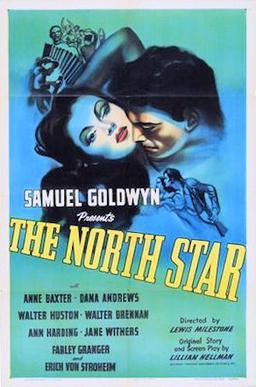
The North Star is a 1943 pro-resistance war film starring Anne Baxter, Dana Andrews, Walter Huston, Walter Brennan and Erich von Stroheim It was produced by Samuel Goldwyn Productions and distributed by RKO Radio Pictures. It was directed by Lewis Milestone, written by Lillian Hellman and featured production design by William Cameron Menzies. The music was written by Aaron Copland, the lyrics by Ira Gershwin, and the cinematography by James Wong Howe. The film also marked the debut of Farley Granger.

Iron Horse is an American Western television series that appeared on ABC from 1966 to 1968 and starred Dale Robertson as fictional gambler-turned-railroad baron Ben Calhoun. Costars included Gary Collins, Robert Random and Ellen Burstyn. The series pilot was released as the film Scalplock.

Law and Order is a 1932 American pre-Code Western film starring Walter Huston, Harry Carey, Andy Devine, Russell Hopton and Russell Simpson. It was the first movie to depict the Gunfight at the O.K. Corral, in Tombstone, Arizona.
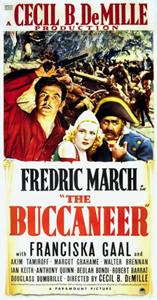
The Buccaneer is a 1938 American adventure film made by Paramount Pictures starring Fredric March and based on Jean Lafitte and the Battle of New Orleans during the War of 1812. The picture was produced and directed by Cecil B. DeMille from a screenplay by Harold Lamb, Edwin Justus Mayer and C. Gardner Sullivan adapted by Jeanie MacPherson from the 1930 novel Lafitte the Pirate by Lyle Saxon. The music score was by George Antheil and the cinematography by Victor Milner.

The Treasure of the Sierra Madre is a 1948 American Western film written and directed by John Huston. It is an adaptation of B. Traven's 1927 novel of the same name, set in 1925, and follows two downtrodden men who join forces with a grizzled old prospector, in searching for gold in Mexico.

Wake Up and Live is a 1937 Fox musical film directed by Sidney Lanfield and starring Walter Winchell, Ben Bernie and Alice Faye. Produced by Darryl F. Zanuck, the film was based upon the self-help bestseller by Dorothea Brande. It was followed by Love and Hisses (1937).
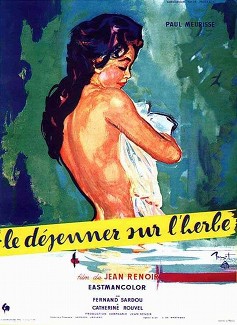
Picnic on the Grass is a 1959 French comedy film written and directed by Jean Renoir, starring Paul Meurisse, Fernand Sardou and Catherine Rouvel. It is known in the United Kingdom by its original title or in translation as Lunch on the Grass. A satire on contemporary science and politics, it revolves around a prominent biologist and politician who wants to replace sex with artificial insemination, but begins to reconsider when a picnic he organizes is interrupted by the forces of nature. The film brings up issues of modernity, human reproduction, youth and European integration. It ridicules rationalist idealism and celebrates a type of materialism it associates with classical mythology and ancient Greek philosophy.

Lure of the Wilderness is a 1952 American Technicolor romantic adventure film directed by Jean Negulesco and based on the 1941 novel Swamp Water by Vereen Bell. The film is a remake of Jean Renoir's 1941 adaption of the novel. Walter Brennan appears in both films, although in a smaller version of his leading role in the earlier version.



















